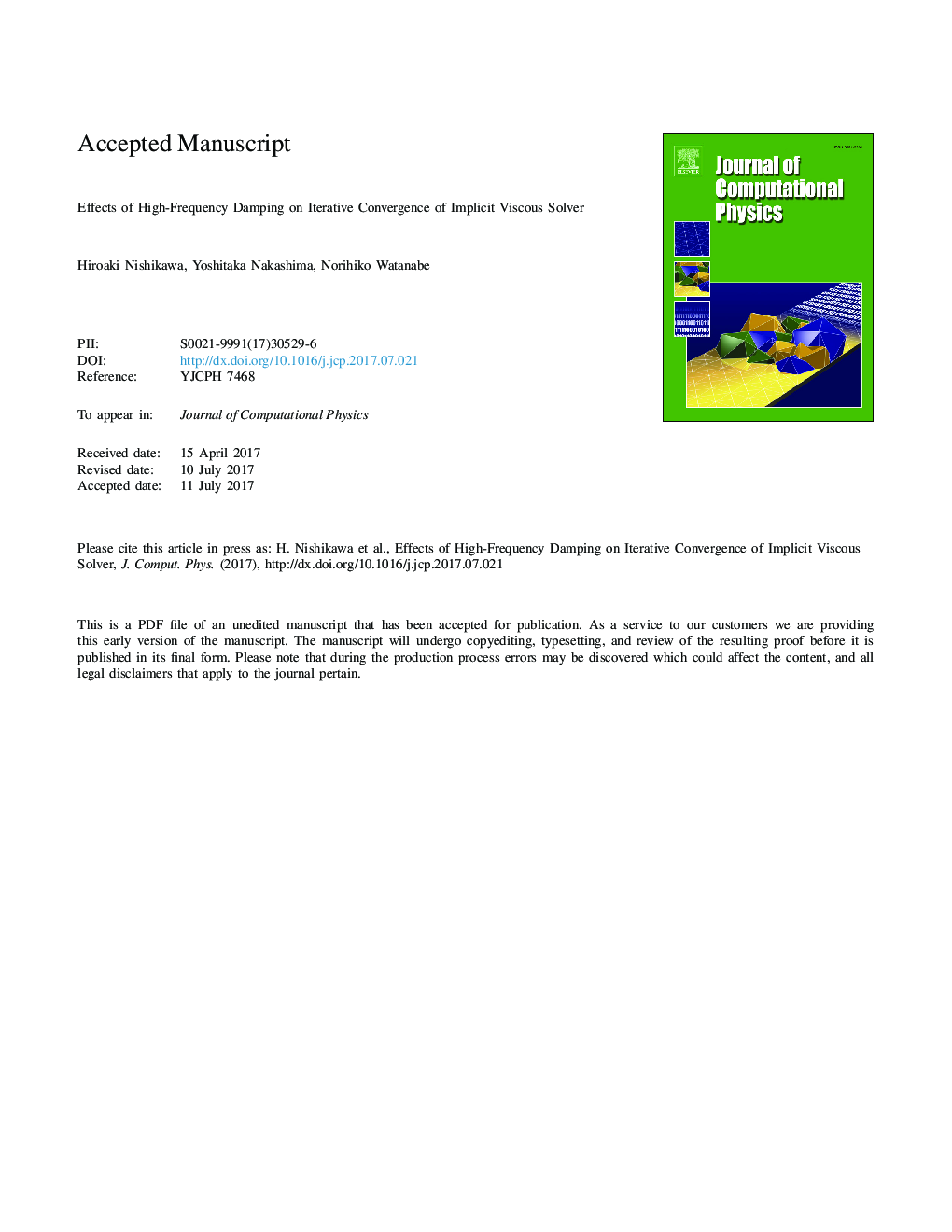| Article ID | Journal | Published Year | Pages | File Type |
|---|---|---|---|---|
| 4967165 | Journal of Computational Physics | 2017 | 21 Pages |
Abstract
This paper discusses effects of high-frequency damping on iterative convergence of an implicit defect-correction solver for viscous problems. The study targets a finite-volume discretization with a one parameter family of damped viscous schemes. The parameter α controls high-frequency damping: zero damping with α=0, and larger damping for larger α(>0). Convergence rates are predicted for a model diffusion equation by a Fourier analysis over a practical range of α. It is shown that the convergence rate attains its minimum at α=1 on regular quadrilateral grids, and deteriorates for larger values of α. A similar behavior is observed for regular triangular grids. In both quadrilateral and triangular grids, the solver is predicted to diverge for α smaller than approximately 0.5. Numerical results are shown for the diffusion equation and the Navier-Stokes equations on regular and irregular grids. The study suggests that α=1 and 4/3 are suitable values for robust and efficient computations, and α=4/3 is recommended for the diffusion equation, which achieves higher-order accuracy on regular quadrilateral grids. Finally, a Jacobian-Free Newton-Krylov solver with the implicit solver (a low-order Jacobian approximately inverted by a multi-color Gauss-Seidel relaxation scheme) used as a variable preconditioner is recommended for practical computations, which provides robust and efficient convergence for a wide range of α.
Keywords
Related Topics
Physical Sciences and Engineering
Computer Science
Computer Science Applications
Authors
Hiroaki Nishikawa, Yoshitaka Nakashima, Norihiko Watanabe,
